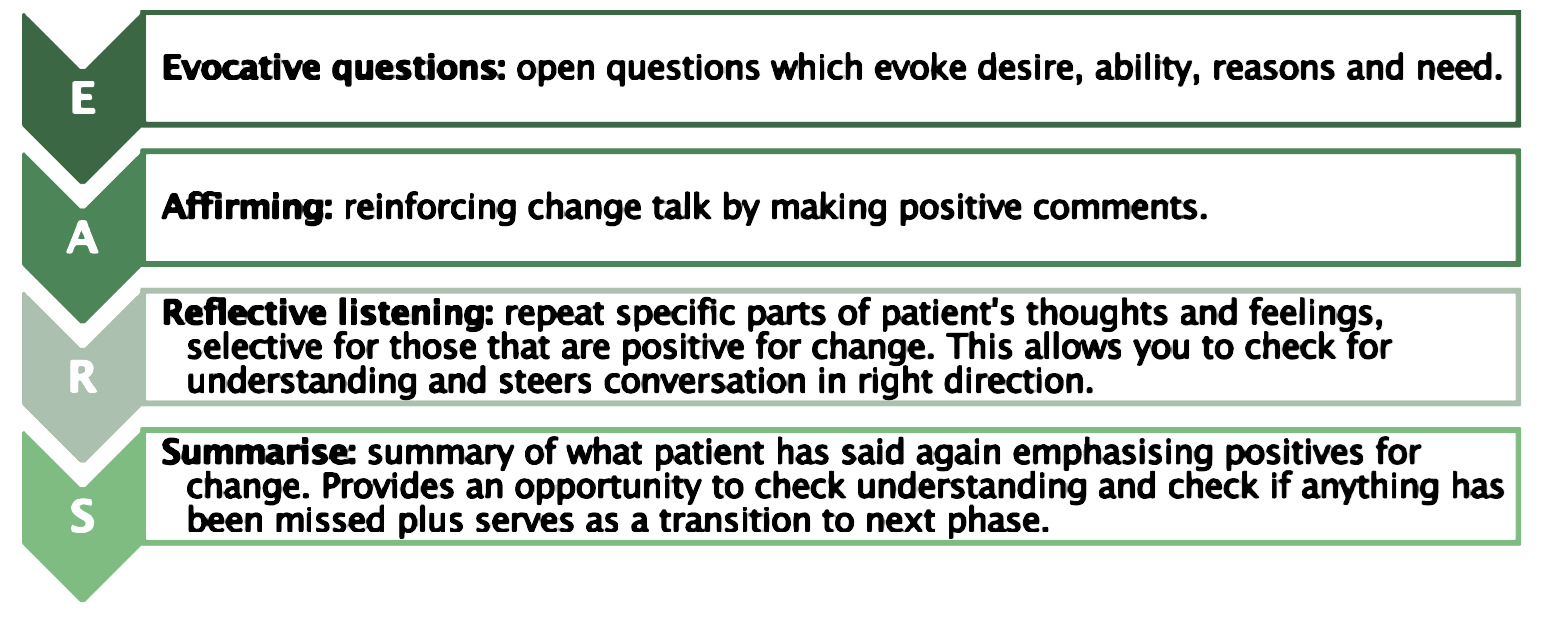If you simply tell an adolescent to change a behaviour, they are likely to simply argue the reverse (the righting reflex) or just not comply. However, all teenagers have beliefs, values, goals and experiences which can be utilised increase their motivation to change. The aim is to connect optimal health behaviour change with what the young person cares about (i.e. their motivation for change) through gaining an insight into their thoughts and evoking their own reasons and goals for change.
There are some useful approaches to helping an adolescent patient voice arguments for change, these will strengthen their resolve to improve their asthma self-management. This is much more likely to achieve a behavioural change than telling them what to do.
Use the EARS techniques for helping a teenage patient voice arguments for change:

Examples of evocative questions
